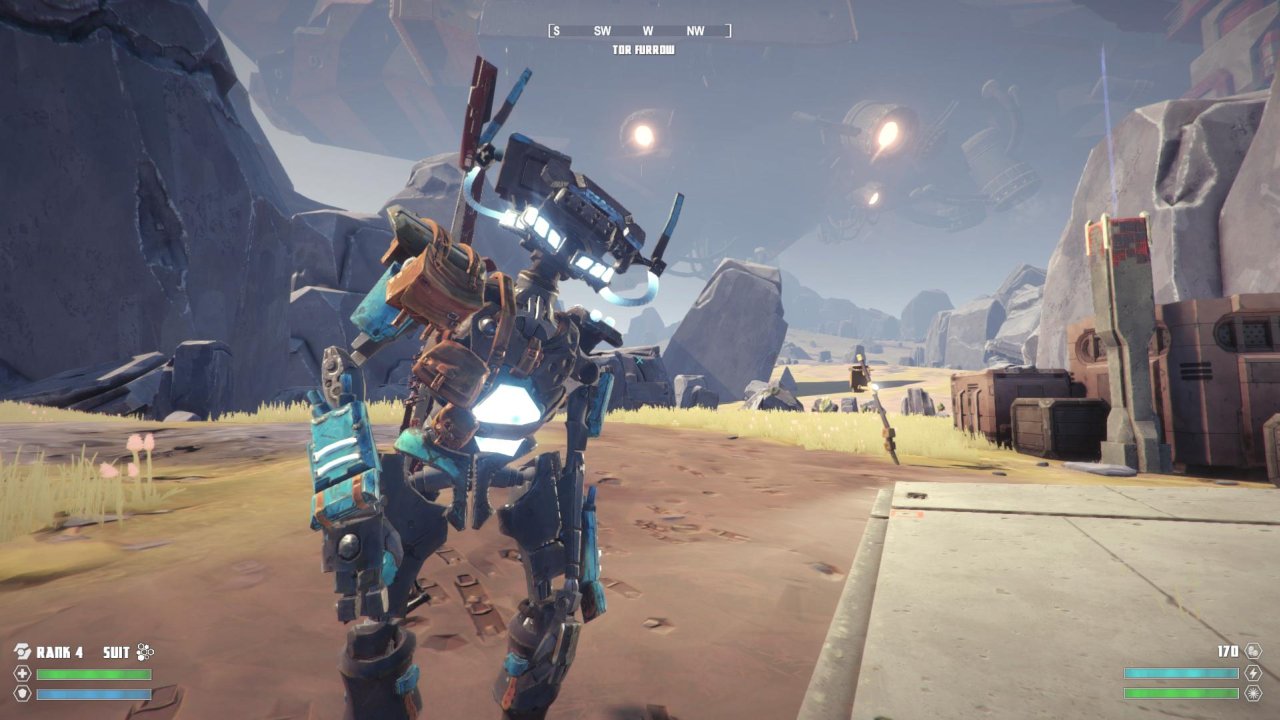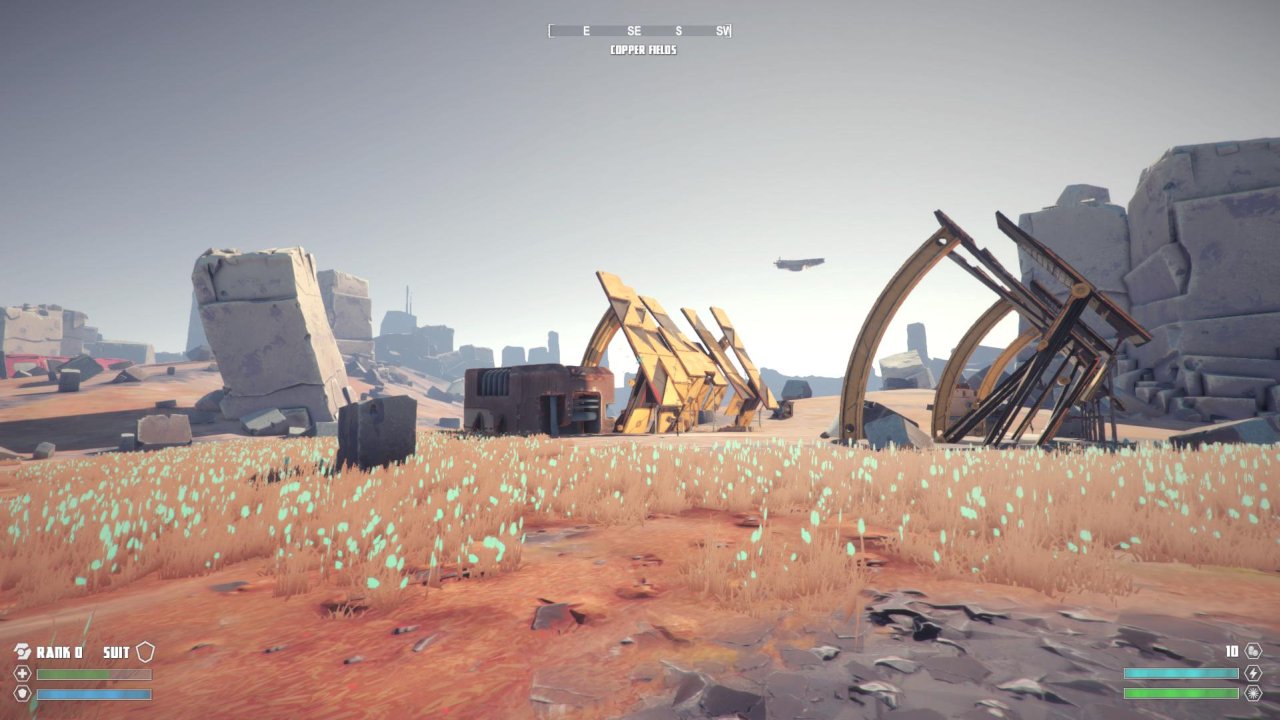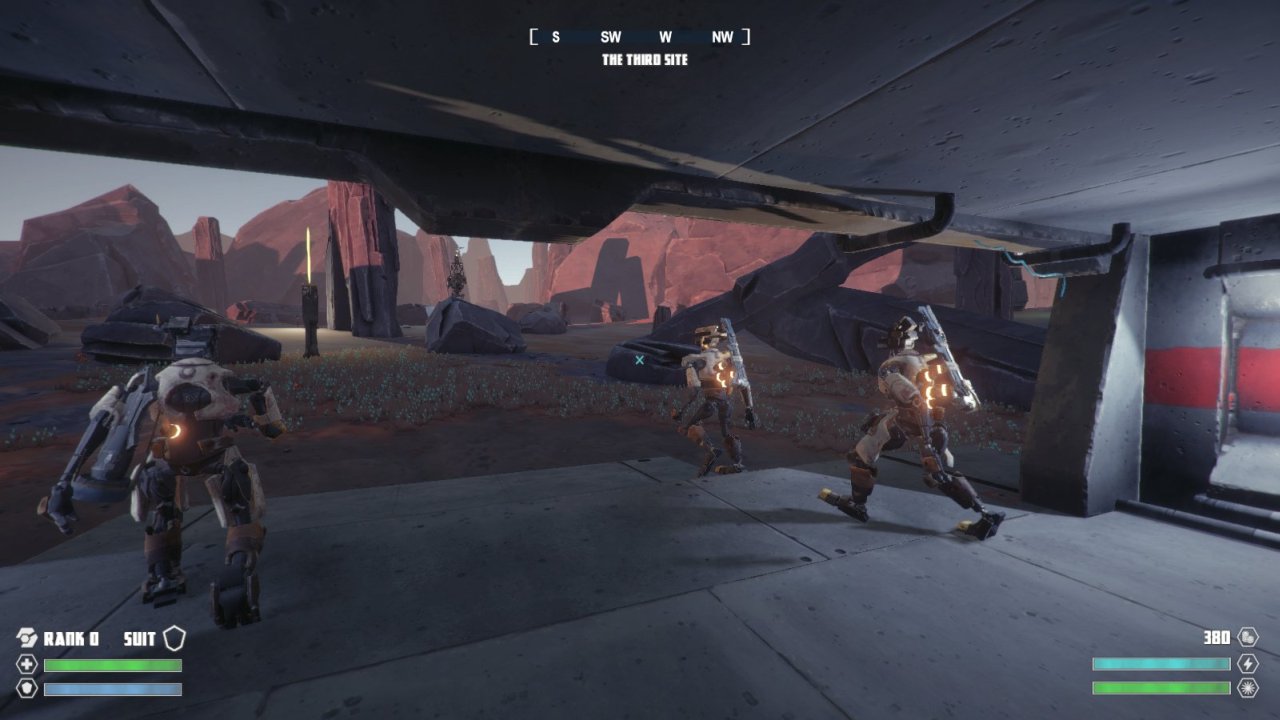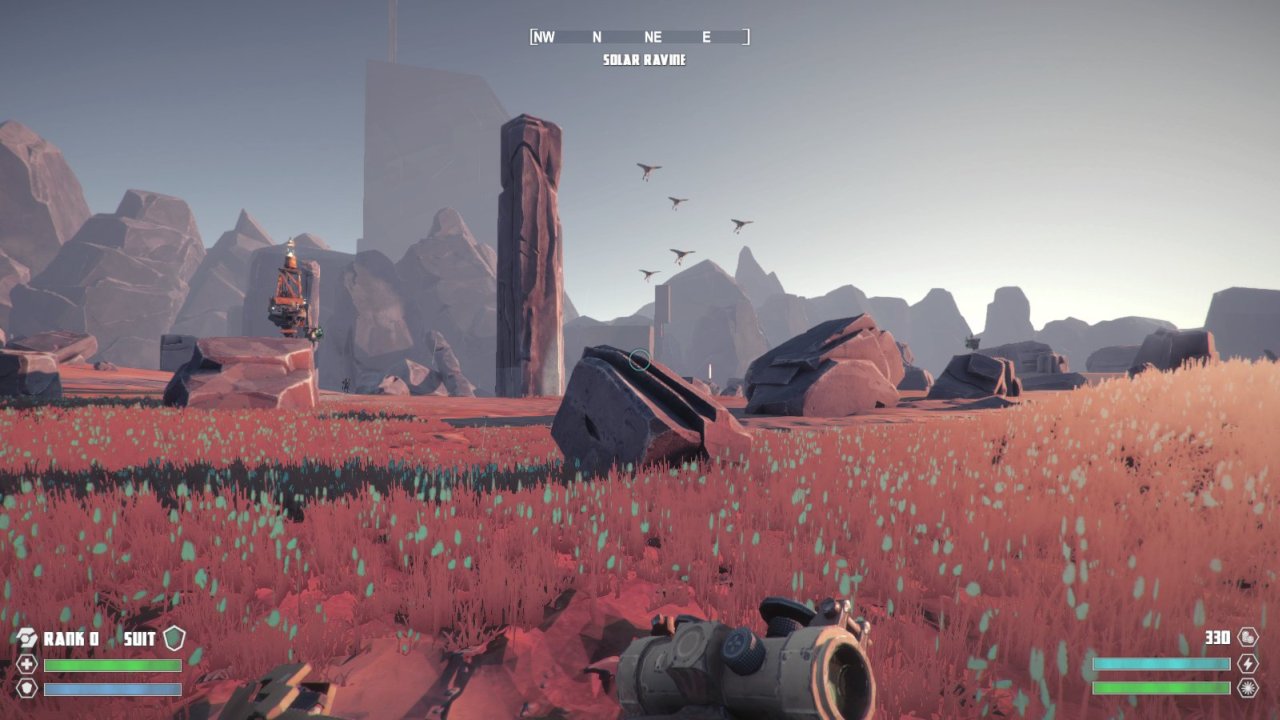The Signal From Tolva Review
On the right wavelength
Do you know about the 'Wow!' signal, reader? It's a famously peculiar burst of energy from deep space that managed to hit one of our radio telescopes in 1977. The name comes from the remark that an astronomer scribbled on the initial printout—I suppose we should be grateful that they were the sort to write "Wow!" and not "Jesus H Christ would you look at the size of that thing"—and to this very day, nobody's really been able to put forth a compelling explanation for it other than 'extraterrestrials'. Exciting, but also slightly sobering; a reminder of the reverence we ascribe to tiny ripples in space, because they're all we really have. All we can do is listen intently, and yell as loudly as we can, and struggle against the bonds keeping us here in the dark. A spike on a chart is as cryptic as it gets, but may contain the answers to innumerable questions, if only we can figure out how to read it. Where did it come from? What caused it? Why did it have this frequency? What's any of this got to do with a video game?

Well, it's right there in the title, innit? The Signal From Tölva is a game about such signals; mysteries of a cosmic variety that need up-close and personal investigation. There's an oddball planet out there called Tölva that's putting out some funky vibes, and since humanity conquered the cosmos, nobody's got anything better to do than to head over and see what the deal is. Alas, thanks to a variety of phenomena, the planet in question is riddled with more weird transmissions than the open Wi-Fi at the local conspiracy theorist meetup, and pinpointing the source of the signal is going to take a more hands-on approach. Working with an information broker—one of those curious professions that only ever seems to crop up in fictional contexts, because as we all really know, information wants to be free—you've been remotely jacked into a surveying robot to explore the surface and unravel its secrets.
But as with any kind of gold rush, you're far from the only person ready to sift through the mud. Tölva's transmission has attracted the attention of three distinct factions: the Surveyors, your allies, who are trying to methodically pin down the source of the signal; the wildcard Bandits, who are just here to loot things and throw televisions out of hotel windows; and the Zealots, who have a similar goal to the Surveyors but are obviously in the wrong because they're doing it for the benefit of some mad space cult. Inevitably, a three-way war has broken out in the midst of the archaeological scramble, and it's this conflict that forms the backbone of the game's fundamental systems. Bots dynamically roam the landscape, forming squads, capturing bunkers, guarding locations, staging attacks and simply exploring, all without any contribution required on the part of the player. Even if you never lift a finger, the tranquillity of the valleys is periodically shattered by bursts of laser fire, heralding small shifts in the overarching struggle. It's a bit like a slimmed-down version of the faction wars from S.T.A.L.K.E.R: Clear Sky, or if that's not relatable enough, picture a self-playing Far Cry.
And keep picturing it, please, because we're about to go over the core loop. At the fundamental level, your job is to explore; to roam the valleys and fields, skirting hazards and navigating terrain. With every new area discovered, missions pop up on the map, vying for your attention: bunkers to capture, beacons to activate, wreckage to loot, signals to investigate, all with their own rewards that enable you to venture further—or at least, make it less of an uphill struggle. It's a bog-standard open-world formula, but it's an open-world formula being pulled off by a small indie team, and frankly that's impressive all on its own.

More impressive still is the world, which is anything but standard, and refreshingly devoid of bogs. I'm reminded strongly of those Simon Stålenhag landscapes that get circulated from time to time; beautiful Nordic vistas that could almost be mistaken for somewhere close to home, if it wasn't for the rusting carcass of an intergalactic cruiser or titanic robot looming in the background. Tölva is a planet of lush fields and gentle valleys, imprinted by the actions of those long gone and those who arrived last week. Bunkers are stark, blocky, angular creations, reminiscent of the structures of Starsiege: Tribes or the original Halo, hemmed in by jagged stone that doesn't quite suit them. Stone tells odd stories of its own; sometimes it's clearly been shattered, or formed into gravity-defying pillars, or hewn into rough cubes and left to sink into the dirt, for purposes unknown. Light sources are unfailingly crisp and dramatic, and without a hint of hyperbole, the ship designs might be my favourite in any game ever. They're heavy and industrial, covered in blinking lights and warning stripes, bolted together out of cast-iron with their guts hanging out, but they're also sleek, colourful, and bold as brass. There's a bright red Zealot frigate docked in a concrete trench in one of the corners of the map, and I swear that I spent one in-game night just walking up and down, taking in all the hatches and flaps and knobbly bits like a traffic inspector who's slightly out of his depth. What's that bit do? No idea, but it looks like it means business.
What a shame, then, that you will never find out what that bit does—or anything much, for that matter. For a world with such pleasant visual design, Tölva feels disappointingly skin-deep; an oblique window into a sci-fi universe that forces you to press your face against the glass, straining for a better view. You are here to explore and unveil mysteries, and the game sets the mood for that perfectly, but there's no pay-off waiting out there. My hopes were lifted early on by the introduction of a scanning function, but it turned out to be less of a Metroid Prime-style flavour text injector and more of a one-note toy. If you scan a robot it'll tell you the robot's rank, condition, weaponry, allegiance, destination, goals, hopes, fears, and favourite brand of industrial joint lubricant, but just about everything else you point it at gets a one-line summary, if that. Hey, computer, what's the deal with this space freighter? What about that hulking ruin? What about this weird rock? "NO DATA AVAILABLE_"? Well aren't you a coy little slab of silicon. Next time I'm buying the one with the friendly letters on the cover.
Shockingly, it turns out that there's plenty of context to Tölva in your grasp—48 pages of it, to be exact. In a quaint nod to the bygone days of PC gaming, when game boxes were full of more supplemental documents than the average chemistry set, The Signal From Tölva ships with an honest-to-goodness lore book (well, a PDF, but it's digital distribution, what the heck do you want?). It's an impressive document, if you like concept art and reams of background text on how things on Tölva got to be the way they are, but it's by no means necessary reading material—which is fortunate, because it's no band-aid for the in-game world's lack of fleshing-out either. It's very much a top-down look at the universe, filtered into nice neat entries and chapters, rather than one assembled piecemeal from the ground up using what you can glean from your surroundings.

But of course, who needs a world full of lore when there are robots to shoot? Combat is an inevitable occurrence on the surface of Tölva, for all the usual reasons—fights over territory, fights over resources, fights over mystical alien artefacts, fights over whose chassis is the better colour—which is a pity, because the moment-to-moment gunplay is really quite dull. Oh, sure, most of the weapons have a nice kick to them and the baddies blow up real good, as I believe the phrase goes, but it's all very shallow and one-note. The ability to mark targets with your robo-binoculars while surveying the area gives the impression that how you approach fights is somewhat open-ended, but it only takes a single laser lancing through the night to shatter the illusion and collapse the situation into the same trite gunfight, in which you and half a dozen assailants run around in a field pew-pew-ing at one another and hiding behind rocks. Opportunities where you can make a meaningful choice or decisive movement are precious rarities, and while enemy fire can shred through your health if you're not adequately prepared—another thing in keeping with the S.T.A.L.K.E.R formula, I suppose—it's hard to feel any sense of tension when failure comes with no real setback besides a momentary delay. Oh dear, you broke your remote-control robot? Too bad, we'll just have to jack you into another identical one, of which we have an infinite supply, at no cost to you.
Combat is just one facet of an open-world shooter, so this is by no means a deal-breaker for Tölva, but it certainly doesn't help that so many of the game's rewards feed into it in one way or another. Tracking down signal sources will unlock weapons and upgrades in the store, which are the only things you can buy with the resources you scavenge from the world, so the system is sort of predicated on new toys being enticing enough to work towards. Many weapons are just minor variations on previous versions with better damage output and some go-faster stripes down the side—a useful, if not particularly exciting way to pad out the ranks—and they more or less all fall under the banner of hitscan rifles; the shooter equivalent of picking Mario in Mario Kart. There's a neat little gadget that lets you rope Surveyor robots into your own personal honour guard and order them around the place, but I only really found myself using it to ensure I had an extra pair of trigger fingers in a firefight, rather than hoping they'd storm over the nearest ridge at an opportune time.
Hmm. Right, the faction wars. Call me oblivious if you like, but while it's all very impressive, knowing that you're just another actor in a dynamic, perpetually shifting ecosystem, I can't say any of the effects of the system ever really manifested in a tangible way for me, which dampened the impact a fair bit. Sure, the hills are perpetually alive with the sound of laser coils, and you can always find bots roaming the landscape with their own goals in mind, but do they ever actually achieve anything? I was by no means a diligent defender of kith and kin—I had valleys to meditatively gaze at, and scrap metal to hoover up, and other really important distractions—but I never actually lost a bunker to an enemy faction once I'd captured it. One might argue that constantly losing ground would be an unnecessarily frustrating way to make the machinations of Tölva apparent, but what else is there? The point of a system like this is to allow emergent situations to naturally coalesce out of the ether, creating stories that you excitedly relate to people on Twitter later in the evening, but what stories are there to tell when all the actors involved are so interchangeable, and all the elements are so streamlined? A firefight is a firefight is a firefight, no matter who the participants are or where they're from.

No, Tölva's systems don't tell stories. That's okay, though, because the game is still brimming with special moments that stand on their own. Your investigation of the planet's signals takes you through a colourful spectrum of zones and situations, and the nearer you get to the truth, the more eerie things become. Some areas have been irradiated, contaminated, or infected with some kind of spooky psychic energy, adding disorienting effects to your camera feed as you struggle through the wasteland. Underfoot, the ground shakes, as if some ancient spectre bound to it for millennia is straining to be heard. In a forgotten crevasse, surrounded by the ruined scrap that was once its lower torso, a dormant Surveyor droid stirs to life and wails plaintively in an unknown communication protocol. And what was that on the horizon? It was there, and then it was gone, but for a moment I was under the gaze of something that was no more machine than it was man. It couldn't speak—or perhaps, wouldn't—but immeasurable reams of data flowed through it, clamorous and overwhelming to my scanner's inputs.
The Signal From Tölva is an unusual open-world shooter; good, but not for the reasons normally associated with open-world shooters. Whenever they crop up, the shooty bits are a bit of a bore, and the game struggles to come up with rewards that aren't fundamentally linked to them in some way or another. The world offers precious few clues as to the state of the wider universe—nor, for that matter, does it have interesting loot—and the warring factions that fill it are of little consequence unless they're between you and what you need. But those are just things you do to keep the game's loop going; The Signal From Tölva is at its best when you're doing nothing significant at all. It's about wandering the world, taking in the strange and inexplicable landmarks, soaking up the unnerving atmosphere in the peaceful interludes between gunfights, pondering the cryptic signals that all seem to point to something, and occasionally getting startled out of your seat by something totally unexpected. You might not come away with all the answers, but then again, they're not the important part, are they?
 Comments
Comments












